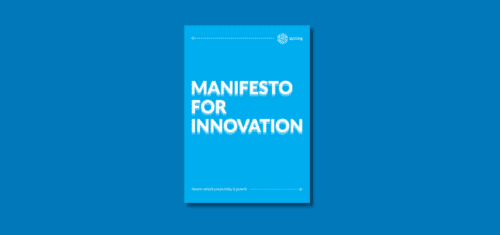The Additional Information Form (AIF) is now an essential requirement for UK companies looking to claim R&D tax credits that came into effect on the 8th of August 2023 to streamline the R&D tax relief claim process.
In this article, find out what the AIF is, the information required to complete it, and how it can improve your chances of a successful claim.
What is the Additional Information Form?
The Additional Information Form is a required document for UK companies claiming R&D tax credits. It asks for specific details about the R&D activities a company has undertaken, such as project details, R&D expenditure, and the scientific or technological uncertainties involved. The AIF helps HMRC verify that only qualifying R&D work receives tax relief.
Who is it for?
Any UK company planning to claim R&D tax credits must complete the additional information form as part of their tax relief claim. This includes both small businesses and large companies carrying out R&D activities that involve qualifying expenditure. By submitting the AIF, businesses give HMRC the necessary information to validate their claims, ensuring that only eligible projects in science or technology receive tax relief.
What information is required?
To complete the additional information form accurately, companies need to provide several key details about their R&D activities and associated expenses. Below is a breakdown of the main information required, covering everything HMRC needs to assess the R&D tax relief claim:
- Contact details: Basic contact information for the person responsible for the claim.
- Company details: Key identifiers, such as the company’s registered name and address. along with key identifiers such as the Company UTR (Unique Taxpayer Reference), Employer PAYE Reference, and VAT Registration Number.
- Accounting periods: The specific accounting period relevant to the claim, which aligns with the company’s corporation tax return.
- Qualifying expenditure by cost category: A breakdown of qualifying expenditure based on HMRC’s defined cost categories, including staff, materials, and subcontractor costs.
- Project details: Descriptions of each R&D project, including the field of science or technology involved, and any scientific or technological uncertainties the project aimed to resolve.
- Qualifying expenditure claimed: The total R&D expenditure for each project, specifying which costs are being claimed as part of the R&D tax credits application.
What other information can be included?
Beyond the core requirements, companies can also include additional details in the AIF to strengthen their claim and provide HMRC with more context. Although there are no specific fields for this within the form, the following details can be included in the relevant narrative sections to strengthen your submission:
- Competent professionals involved in the project: A summary of the key individuals or teams who led or contributed to the R&D activities, demonstrating their expertise and roles.
- Methodology of projects: An overview of the approach or techniques used in the R&D activities, helping to illustrate the structured process taken to overcome challenges.
- Objectives and outcomes of each project: A brief summary of the intended outcomes or breakthroughs, helping to highlight the innovation or advancement aimed for through the R&D activities.
- Evidence of scientific or technological advancements: Examples of how the project contributes to the broader field, especially in areas where scientific or technological uncertainty was a challenge.
We’re here to help
Filling out the additional information form can be challenging, but we’re here to help simplify the process.
Our experts can support you with gathering and presenting the necessary details, ensuring your form meets HMRC’s requirements. We’re also able to complete the AIF on your behalf, saving you time and reducing the risk of errors, so you can focus on what matters most – driving innovation in your business.
Contact us today to discuss how we can support your AIF submission and help you strengthen the value of your R&D tax credits.


